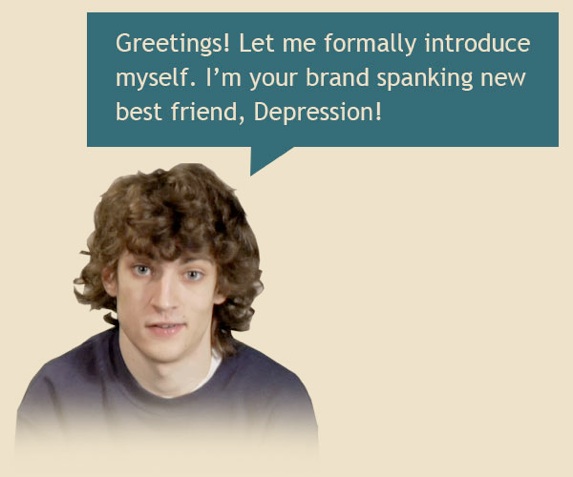Latest Public Service Radio Minute
Loss of EmploymentLoss of Employment, MP3, 1.3MB
Listen to or download all our PSAsSupport Our Work
Please donate so we can continue our work to reduce the stigma of psychiatric illness, encourage research, and support educational activities for behavioral health professionals and the public. Ways you can donate and help are on our Support and Donations page. Thank you!
More InfoLatest News Around the Web
Young People Struggle To Get Medical Treatment While Maintaining Confidentiality
NPR (4/15) reports in its “Shots” blog that “studies show that young people often hesitate to get certain types of medical care, such as mental and behavioral health care, birth control and sexual health screenings, because they don’t want their parents to find out through insurance statements.” Several states are working to rectify the problem “but none has a foolproof solution.” Abigail English, president of the Center for Adolescent Health and the Law, says the “issue of maintaining confidentiality while a dependent is one that has existed for a long time” and is just now receiving attention because of the increase in dependents under the ACA.
Related Links:
— “When Keeping A Secret Trumps The Need For Care,” Maanvi Singh, National Public Radio, April 15, 2015.
Study: Suicide Rates Higher Among Rural Youth
The Education Week (4/16, Mader) “Rural Education” blog reports that researchers at the Ohio State University Wexner Medical Center found after analyzing “data from 1996 to 2010 from the National Center for Health Statistics” that “suicide rates among youth ages 10 to 24 are nearly twice as high in rural communities than in urban areas.”
The authors said “isolation and lack of access to health care, especially mental health care,” were factors, and they suggested that school-based programs would improve access to care. The piece mentions other recent studies exploring the problem in Alaska and on Native American reservations. The study (4/16) appeared online March 9 in JAMA Pediatrics.
Related Links:
— “Study: Youth Suicide Rates Higher in Rural Areas,” Jackie Mader , Education Week, April 15, 2015.
Suicide At William & Mary Sparks Concerns Over Mental Health
The Washington Post (4/16, Svrluga) reports on the suicide Monday of a sophomore at the College of William & Mary, illustrating how the incident, the fourth this year at the Virginia university, raises “concerns about the challenges college students handle on a daily basis and the mental health struggles students can face.” The article notes that William & Mary’s associate vice president for health and wellness “cautioned that it is easy to over-connect academic stress and the risk of suicide,” and that a history of mental health issues was a better predictor for suicide.
Related Links:
— “Suicide at William & Mary, fourth student death this year, triggers concern,” Susan Svrluga, Washington Post, April 15, 2015.
Study: Simultaneous Marijuana, Alcohol Use May Increase Drunk Driving Likelihood
HealthDay (4/15, Thompson) reports a new study published online in the journal Alcoholism: Clinical & Experimental Research suggests that “drinkers who smoke marijuana as they imbibe are twice as likely to drive drunk compared with people who stick to alcohol alone.” The study of data on nearly 9,000 people also revealed that “these ‘simultaneous’ users are also three times more likely to face social troubles as a result of drinking and marijuana – drunken brawls, broken marriages, damaged relationships and ruined careers among them.”
Related Links:
— “Pot Plus Booze Doubles Odds for Drunk Driving, Study Says,” Dennis Thompson, HealthDay, April 14, 2015.
Depression, Insomnia And Exhaustion May Be Major Risk Factors For Frequent Nightmares
HealthDay (4/15, Preidt) reports that a study published in the April issue of the journal Sleep suggests that “depression, insomnia and exhaustion may be major risk factors for frequent nightmares.” The study of approximately 14,000 adults in Finland revealed that “frequent nightmares were reported by about 28 percent of people with severe depression and about 17 percent of those with frequent insomnia.” The study’s lead author suggested in a news release, “It might be possible that nightmares could function as early indicators of onset of depression and therefore have previously untapped diagnostic value.”
Related Links:
— “Depression, Insomnia, Fatigue Are the Stuff of Nightmares,” Robert Preidt, HealthDay, April 14, 2015.
Foundation News
Nothing Found
It seems we can’t find what you’re looking for. Perhaps searching can help.

